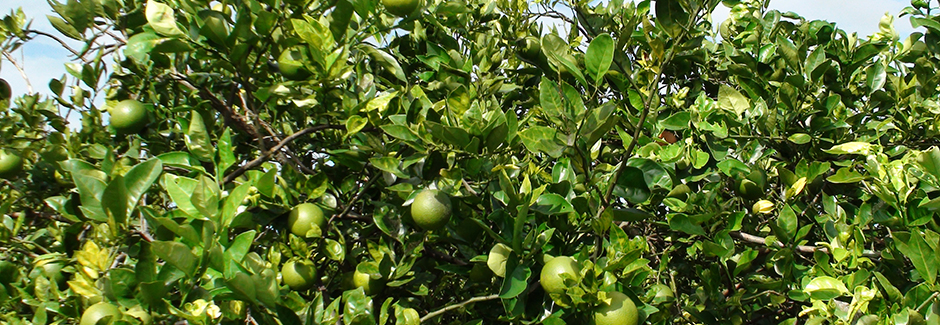
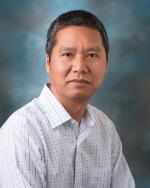
Zhonglin Mou
Associate Professor, Microbiology and Cell Science
University of Florida
Muesuem Road, Building 981, Rm1249
Gainesville, FL 32611
E-Mail: zhlmou@ufl.edu
Phone: (352)392-0285

Jude Grosser
Professor, Plant Cell Genetics
University of Florida, Citrus Research and Education Center
700 Experiment Station Rd
Lake Alfred, FL 33850
E-mail: jgrosser@ufl.edu
Phone: (863)956-8680
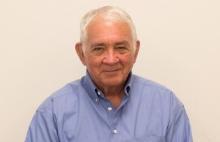
William Dawson
Professor, Plant Pathology
University of Florida, Citrus Research and Education Center
700 Experiment Station Rd
Lake Alfred, FL 33850
E-mail: wodtmv@ufl.edu
Phone: (863)956-8714

Amit Levy
Assistant Professor, Plant Pathology
University of Florida, Citrus Research and Education Center
700 Experiment Station Rd
Lake Alfred, FL 33850
E-mail: amitlevy@ufl.edu
Phone: (863)956-4631

Mike Irey
United States Sugar Corporation Technical Operations
111 Ponce de Leon Avenue
Clewiston, FL 33440
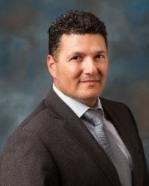
Ozgur Batuman
Assistant Professor, Citrus Pathology
University of Florida, Southwest Florida Research and Education Center
2685 State Rd 29N
Immokalee, FL 34142
E-Mail: obatuman@ufl.edu
Phone: (239)658-3408

Manjul Dutt
Research Assistant Scientist, Horticulture
University of Florida, Citrus Research and Education Center
700 Experiment Station Rd
Lake Alfred, FL 33850
E-mail: manjul@ufl.edu
Phone: (863)956-8679

Vladimir Orbovic
Scientific Laboratory Manager
University of Florida, Citrus Research and Education Center
700 Experiment Station Rd
Lake Alfred, FL 33850
E-mail: orbovic@ufl.edu
Phone: (863)956-8729

Choaa El Mohtar
Research Assistant Scientist, Plant Pathology
University of Florida, Citrus Research and Education Center
700 Experiment Station Rd
Lake Alfred, FL 33850
E-mail: mohtarc@ufl.edu
Phone: (863)956-8720

Stanton Gelvin
Professor, Biological Sciences
Purdue University, Dept. of Biological Sciences
915 West State Street
West Lafayette, IN 47907
E-Mail: gelvin@purdue.edu
Phone: (765)494-4939
HLB, or citrus greening, was first identified in Florida in 2005. Candidatus Liberibacter asiaticus, the causal agent of HLB, is a phloem-limited bacterium that is transmitted by the Asian Citrus Psyllid (ACP). The ACP picks up the bacterium while feeding on the phloem of an infected citrus plant and spreads it to healthy citrus trees as it moves around the grove. At this time HLB is not curable and will slowly cause a decline in the health of the citrus tree, ultimately killing the tree. In Florida, HLB has spread to nearly all trees, reducing citrus yields and juice quality. Total citrus production in Florida has shrunk by more than 50% since 2005, causing the closure of citrus packing and processing plants. The survival of the juice market in Florida requires new plantings to increase overall production. However, without resistant or tolerant citrus trees, psyllid control measures are not sufficient to provide productivity in most new plantings. California is being extremely pro-active in its efforts to prevent HLB establishment – despite their efforts, the Asian citrus psyllid vector is now well-established. Restoration of the Florida citrus industry requires new trees that better tolerate the infection or reduce the spread of the disease and they are needed immediately.
CRISPR/Cas9 is a gene editing technology that has been successful at editing genes in diverse organism, such as bacteria, yeast, plants, and animals. It can be used to delete whole genes, part of genes, or create mutations in the host genome in order to improve the production of agricultural crops. In citrus, this technology will be used to generate citrus with short deletions, which are like natural mutations; therefore, the citrus generated through this method will not be considered GMOs and will be available to growers much quicker and have a higher change of benefiting Florida’s citrus industry as well as those in California and Texas.
In this project, we will establish transient expression-based CRISPR/Cas9 gene editing protocols in citrus and use these protocols to produce transgene-free HLB-resistant or tolerant citrus plants. Because we expect this to be technically challenging, we are attempting to increase the probability of success by approaching it by different methods and expertise. We will use polyethylene glycol (PEG)-mediated protoplast transformation, Agrobacterium, and gene gun bombardment to transiently express Cas9/gRNA introduced as DNA or RNA, or direct introduction of Cas9 protein preloaded with gRNA. Citrus generated by transgene-free CRISPR/Cas9 gene editing methods will contain short deletions, which are like natural mutations, and thus are not considered GMOs.
The CRISPR/Cas9 technology is based on the bacterial and archaeal clustered regularly interspaced short palindromic repeats (CRISPR) adaptive immune system for cleansing invading viral and plasmid DNA, which relies on the endonuclease activity of CRISPR-associated (Cas) proteins such as Cas9, with sequence specificity defined by CRISPR RNAs (crRNAs). An engineered single guide RNA (gRNA) is used to replace the crRNAs and determine the binding specificity of Cas9 with the target DNA through both gRNA-DNA base pairing and a protospacer-adjacent motif (PAM, sequence: NGG). The nuclease domains of Cas9 cleave the target DNA, creating a double-strand break. The DNA break is then repaired mostly by a mechanism referred to as non-homologous end-joining repair, in which DNA bases are added or removed randomly. This process is easy to create mutations by introducing either a premature stop codon or a frameshift mutation, resulting in a non-functional gene product. The CRISPR/Cas9 system has been successfully used to achieve efficient gene editing in diverse organisms such as bacteria, yeast, plants, and animals.
When CRISPR/Cas9 is used to create mutations, the DNA fragment containing the Cas9/gRNA genes is often introduced into the host genome, resulting in a GMO product. For annual/biennial crops, the transgene can be segregated out after crossing with non-transgenic plants. However, for perennial plants such as citrus, this is almost impossible. Therefore, a transgene-free gene editing method is needed for citrus. Recently, Zhang et al. reported two simple and efficient gene editing methods in which plants are regenerated from callus cells transiently expressing Cas9/gRNA introduced as DNA or RNA. These methods were able to produce transgene-free and homozygous wheat mutants in the T0 generation.
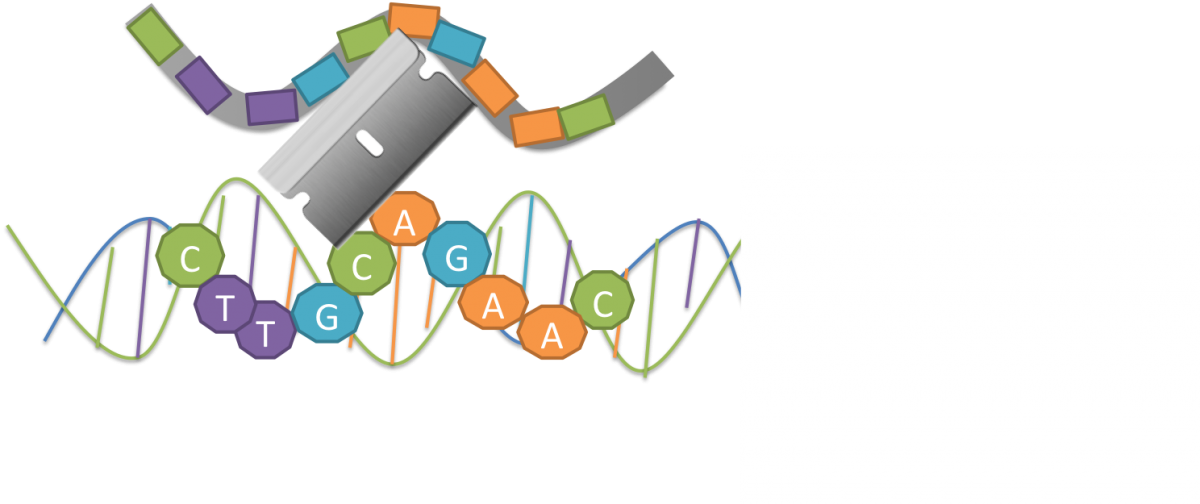
CRISPR - Cas9 - Credit to Dr. Jenna Gallegos
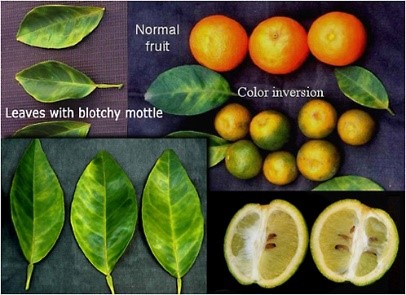
Credit to UF / IFAS
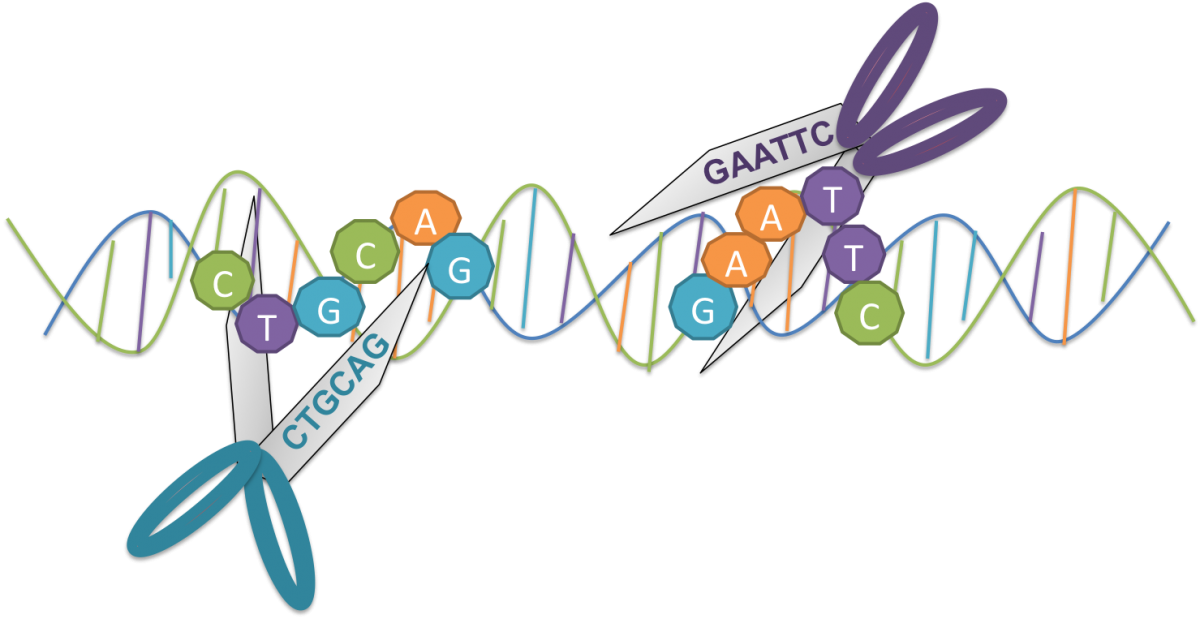
Credit to Dr. Dr. Jenna Gallego
A series of transgenic plants were designed by the Mou lab, produced by the Orbovic lab, and screened for resistance or tolerance to canker by the Graham lab and for HLB resistance or tolerance by the Dawson lab. Two lines in Hamlin sweet orange and one line in Duncan grapefruit were found to be highly tolerant to HLB. These plants were positive for CLas by PCR but had occasional and minor leaf symptoms and have continued growing normally. Since usefulness of a transgenic citrus line would require it to retain the tolerant phenotype in all the progeny plants produced by grafting, the original lines have been propagated into multiple sets of progeny plants 4 times and with each of the replicates retaining the same level of tolerance. Other lines, that at first appeared to be tolerant but when propagated had some plants that were not tolerant, were discarded.
We are developing another assay to determine whether tolerant trees would retard spread of HLB. We previously demonstrated that CLas-infected psyllids that reproduce on healthy wild-type citrus infect the new flush allowing the nymphs to acquire the bacterium, resulting in infected progeny psyllids. We wondered whether the tolerance resulted from reduced multiplication and spread of CLas in the new flush. If so, this could cause the psyllid nymphs to be less able to acquire CLas. To test this possibility, we added infected psyllids to single transgenic plant in a cage and determined the proportion of progeny psyllids that were positive for CLas by PCR. We were surprised to discover that grapefruit of the transgenic line 137-2 had few or no progeny psyllids compared to 200-300 for wild-type plants. This has been repeated with 10 replicates of this line. So far, we haven’t seen this phenotype in any other lines including those expressing the same transgene, suggesting that line 137-2 carries a T-DNA insertion mutation in a citrus gene that is required for psyllid reproduction.
Concurrent work is ongoing to develop approaches to reducing disease (antimicrobial peptides) or controlling the psyllid vector (RNAi) using the CTV vector. Commercialization and application for regulatory approval of these approaches are being done by Southern Gardens Citrus. The CTV vector retains inserts transiently and will gradually stop being effective. An alteration of the citrus genome to provide resistance, tolerance, or interference with psyllid reproduction and transmission should provide much longer control. However, finding genes that can be silenced by CTV to provide tolerance to HLB or lack of psyllid reproduction could be an interim control measure using CTV constructs in the field before the CRISPR/Cas9 modified plants are available.
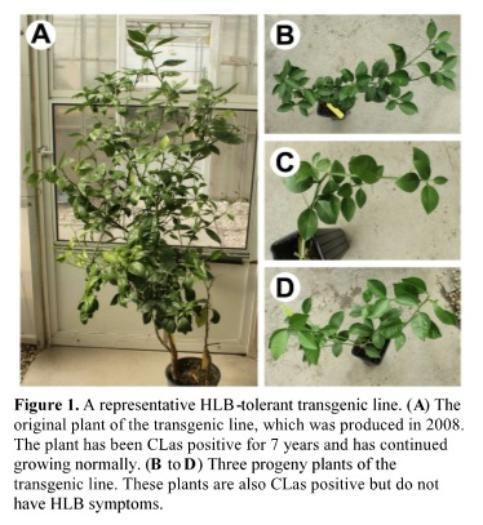
Credit to Dr. Zhonglin Mou
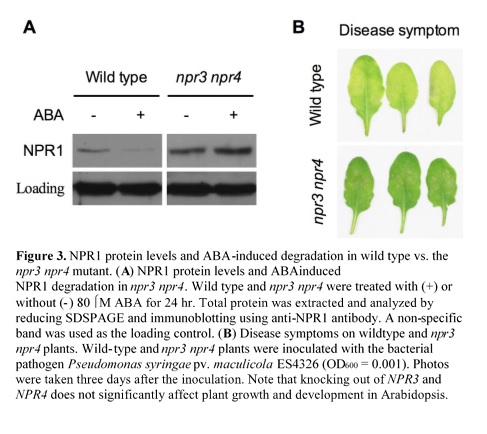
Credit to Dr. Zhonglin Mou
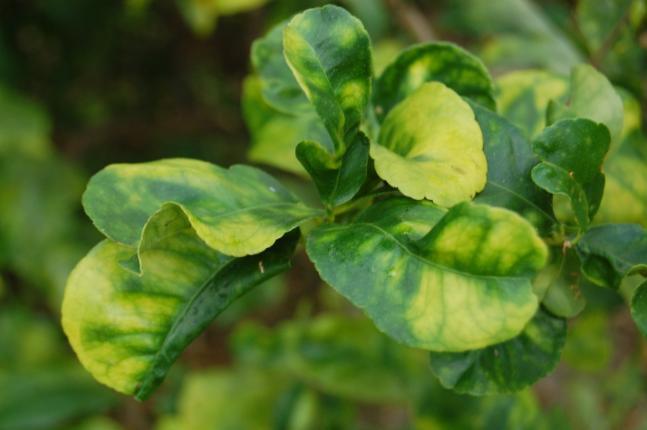
HLB Symptom, Credit to George Ugartemendia
Nymphs, Credit to George Ugartemendia
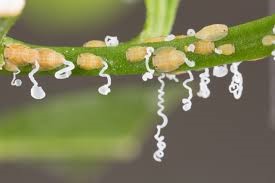
Psyllid, Credit to UF/IFAS
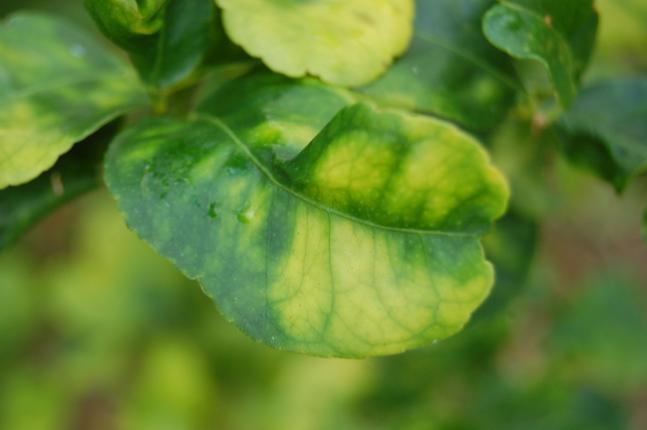
HLB Symptom, Credit to George Ugartemendia
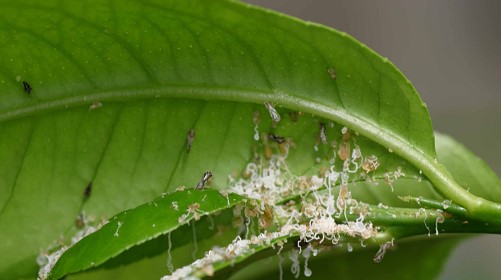
Psyllid, Credit to UF / IFAS
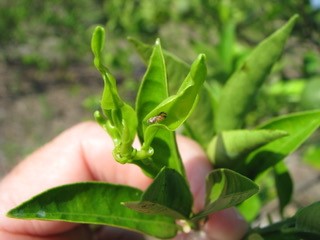
Psyllid, Credit to UF / IFAS
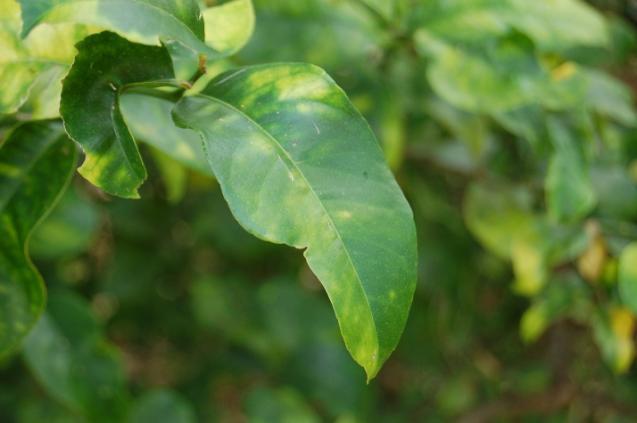
HLB Symptom, Credit to George Ugartemendia
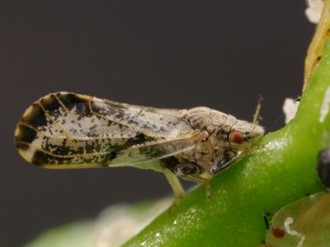
Psyllid, Credit to UF / IFAS
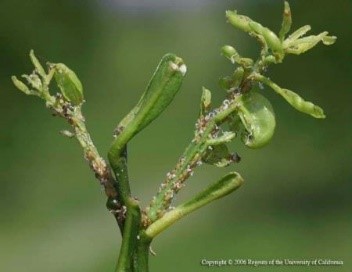
Psyllid, Credit to UF / IFAS
Inserting foreign genetic materials into cells makes an organism genetically modified. CRISPR/CAS9 will be used in this project to make small deletions in the genome instead of any additions of genetic material. The resulting plants and fruit will be non-GMO and therefore not subject to the stringent regulations common to GMO products.
Fruit grown on trees with a small genetic deletion will be completely safe to eat fresh or drink in juice form. The mutation will not affect fruit development, sweetness or juice production.
Research conducted through consumer surveys and polls indicate consumers will purchase and use citrus products made using CRISPR/Cas9 techniques, especially if they are different than GMO food products.